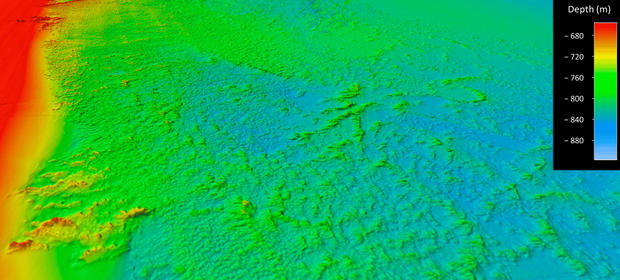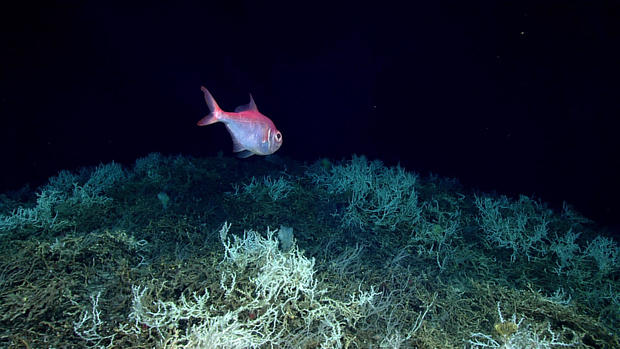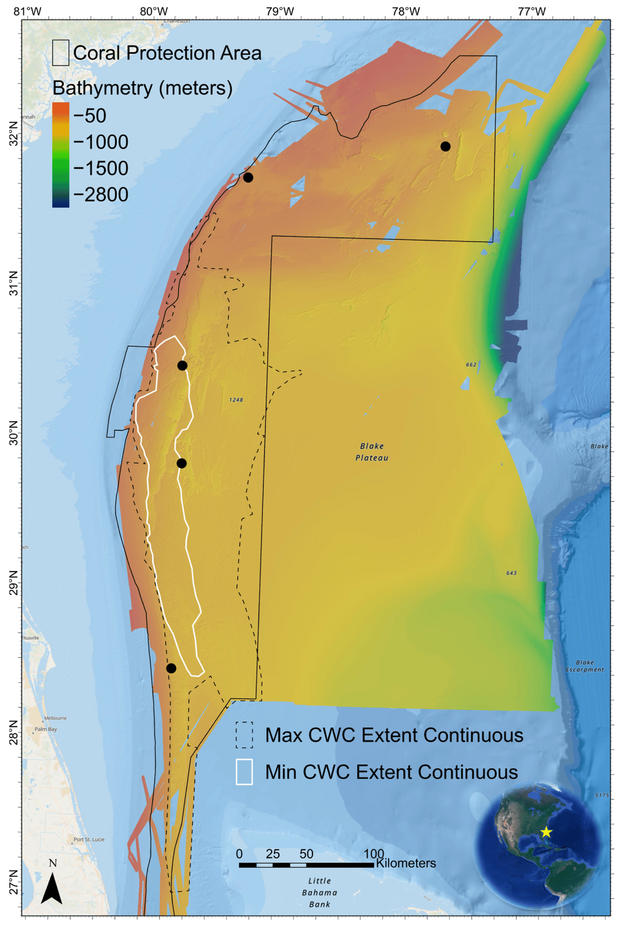See maps of the largest-ever deep-sea coral reef that was discovered in an area once thought mostly uninhabited
After a disastrous year for coral reefs in which abnormally high ocean temperatures served a fatal blow to many of the vital underwater ecosystems, researchers have found a glimmer of hope off the coast of the U.S. – the largest-ever deep-sea coral reef.
It's been known since the 1960s that there were massive mounds of cold-water coral off the East Coast, and for years, NOAA researchers say they thought their study area, the Blake Plateau, was "sparsely inhabited." But more than a decade of mapping and exploration "revealed one of the largest deep-sea coral reef habitats found to date anywhere in the world," NOAA Ocean Exploration operations chief Kasey Cantwell said.
Researchers found the reef system in a study area of the Blake Plateau nearly the size of Florida, ranging roughly from Miami to Charleston, South Carolina. The underwater seascape turned out to be 310 miles long and 68 miles wide, NOAA said, and covers 6.4 million acres, an area larger than Vermont.
The largest area found has been nicknamed "Million Mounds" by scientists, NOAA said, and is mostly made up of stony, cold-water coral known as Desmophyllum pertusum – previously called Lophelia pertusa – that's commonly found between 656 feet and 3,280 feet below the ocean surface. At those depths, there is no sunlight and the water has an average temperature of 39 degrees Fahrenheit.
The newly uncovered region has the "most extensive" ecosystem of Desmophyllum pertusum ever found within U.S. waters, the study authors said, with mounds estimated to be thousands of years old.
But as study authors noted, habitats for these types of coral are "slow-growing, long-lived and fragile." Human activities, including trawling, pipelines and oil and mineral production and exploration, make these areas "particularly vulnerable."
"Many [deep-sea corals] live for hundreds of years, with some colonies living over 4,000 years," NOAA says, with latest discovery revealing nearly 84,000 individual coral mound peak features. "Over time, these slow-growing corals can build mounds that rise over 150 meters (500 feet) off the seafloor."
Roughly half of United States' marine waters and 75% of the world's oceans have not yet been mapped, Derek Sowers, mapping operations manager for the Ocean Exploration Trust, said in a statement by NOAA. Sowers, the lead author of the study that outlined the discovery, said that their finding is "a perfect example of what we can accomplish" when resources are pooled.
"Past studies have highlighted some coral in the region, particularly closer to the coast and in shallower waters, but until we had a complete map of the region, we didn't know how extensive this habitat was, nor how many of these coral mounds were connected," Cantwell, the operations chief, said. "This discovery highlights the importance of exploring our deepwater backyard and the power of interagency collaboration and public-private partnerships."
Last year proved to be difficult for shallower reefs off Florida's coast. Researchers found "100% coral mortality" at one restoration site in July that has been long frequented by snorkelers and divers. another coral restoration site lost "almost all of the corals," caretakers said, as ocean temperatures soared to levels far above the norm, at some points in the triple digits.
While coral bleaching from high temperatures may not be a significant threat to these systems right now, NOAA says that human activities pose a major threat to these systems, which provide habitat to invertebrates and fish. Many of these areas are also where oil and gas operations are conducted, NOAA said, making them susceptible to oil spills. Mineral mining also poses a threat, as the study authors noted.
"Mining machines are large and may permanently remove large areas of deep-sea coral habitat," NOAA said. "In addition, future impacts from climate change are not well understood, but increasing temperatures may shift species' distributions and increasing acidity may weaken coral skeletons, particularly in deeper waters where the impacts of ocean acidification are thought to be greatest.
NOAA says that finding this site and the coral that inhabits it will help scientists better understand the resilience of deep-sea species. They added that having that information allows researchers to better develop plans to protect the corals of the deep sea, which account for more than half of all known coral species.







